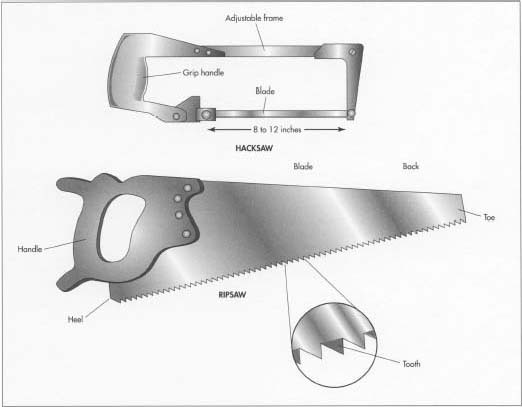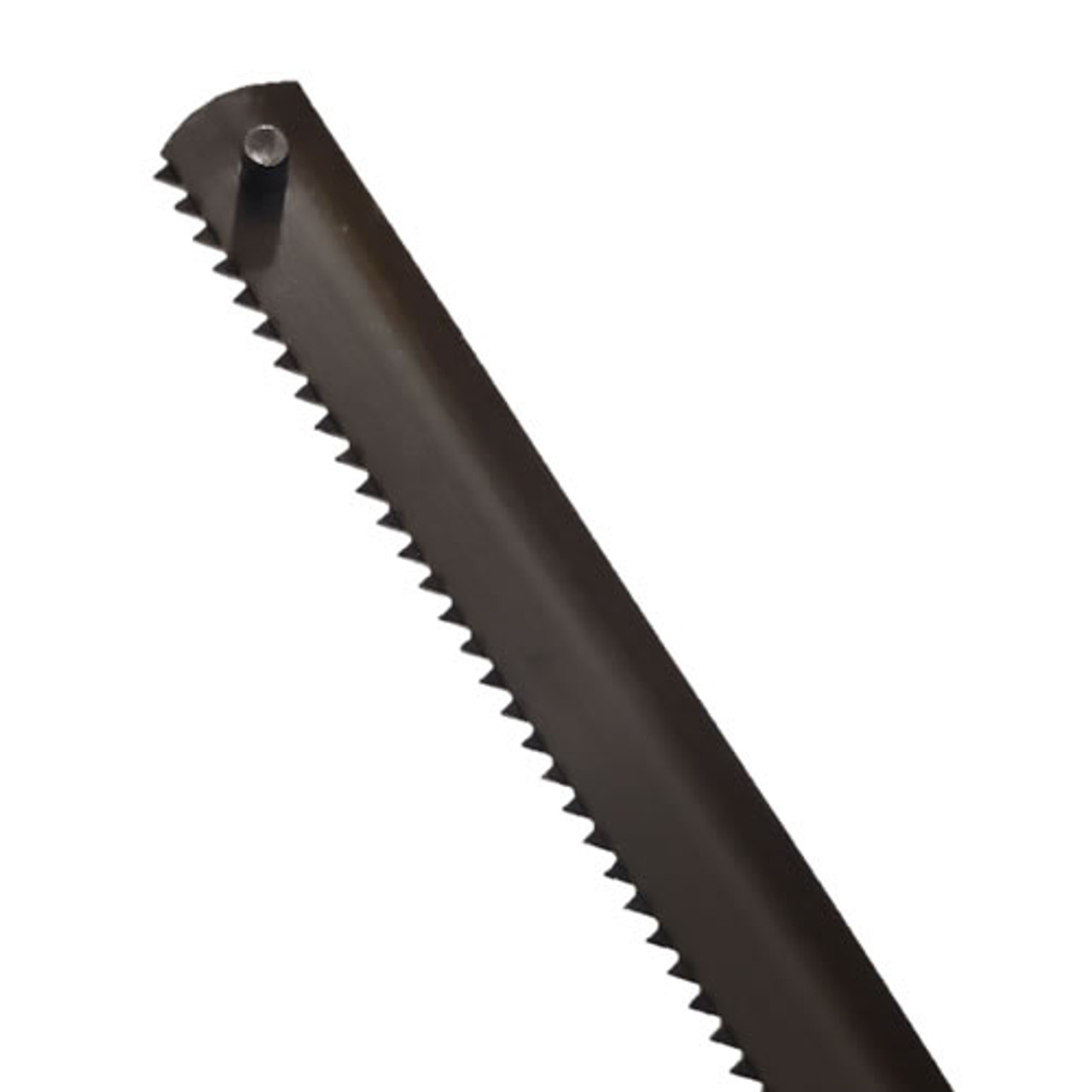Do you ever wonder what makes the blades of hand saws so strong and reliable? Well, let’s delve into the fascinating world of hand saw blade materials to uncover the secret behind their cutting prowess. In this article, we’ll answer the question, “What steel are hand saw blades made from?” and explore the different types of steel used in these essential tools. So, get ready to sharpen your knowledge and saw through the details!
Ready to dive into the world of hand saw blades and their unique materials? We’ve got you covered! When it comes to cutting through wood, plastic, or metal, the steel used in the blades plays a crucial role in determining their performance. So, let’s unravel the mystery and find out what types of steel are commonly used in hand saw blades. From high-carbon steel to bi-metal blades, we’ll uncover the secrets behind their strength and durability.
Why settle for dull blades when you can have precisely engineered hand saws designed for the toughest cutting tasks? By understanding the different types of steel used in hand saw blades, you’ll be equipped with the knowledge to choose the right tool for any cutting job. So, join us as we explore the realm of steel choices for hand saw blades and empower yourself to make informed decisions when it comes to your cutting needs. Get ready for a saweet journey!

What Steel Are Hand Saw Blades Made From? Exploring the Steel Types Used in Hand Saw Blades
Hand saw blades are essential tools for cutting through various materials, including wood, metal, and plastic. The performance and durability of a hand saw blade depend greatly on the type of steel used in its construction. Different steel alloys offer unique benefits and properties that make them suitable for specific cutting applications. In this article, we will delve into the fascinating world of hand saw blades and explore the different types of steel used in their manufacturing.
The Importance of Steel in Hand Saw Blades
Steel is the backbone of hand saw blades, providing the necessary strength, hardness, and resilience needed for cutting through materials with precision and efficiency. The choice of steel can greatly affect the cutting performance and lifespan of a hand saw blade. Let’s take a closer look at some of the most commonly used steels in hand saw blade manufacturing.
1. High Carbon Steel
High carbon steel is a popular choice for hand saw blades due to its excellent cutting performance and durability. It contains a high percentage of carbon, typically ranging from 0.6% to 1.5%, which enhances its hardness and edge retention. High carbon steel hand saw blades are known for their sharpness and ability to cut through wood effortlessly. However, they may be more prone to rust and corrosion compared to other types of steel.
High carbon steel hand saw blades are often heat treated to further improve their hardness and toughness. This heat treatment process involves heating the blade to a specific temperature and then rapidly cooling it, which creates a desirable microstructure and enhances the overall performance of the blade.
2. Bi-Metal Steel
Bi-metal hand saw blades offer a combination of strength, durability, and flexibility. They are made by welding together two different types of steel. The teeth of the blade are made from high-speed steel, known for its exceptional hardness and ability to retain sharpness even when subjected to high temperatures. The body of the blade, on the other hand, is made from a more flexible and shock-absorbent steel, such as spring steel. This combination allows the blade to cut through a wide range of materials without breaking or losing its cutting edge.
Bi-metal hand saw blades are widely used in construction, woodworking, and metalworking applications. They are particularly suitable for cutting through materials that are difficult to saw, such as hardened screws, nails, and pipes.
3. Carbide-Tipped Blades
Carbide-tipped hand saw blades are the epitome of durability and longevity. These blades feature cutting teeth that are tipped with super-hard carbide materials, such as tungsten carbide. Carbide is known for its exceptional hardness and resistance to wear, making it ideal for cutting through abrasive materials like laminates, plastics, and non-ferrous metals.
Carbide-tipped hand saw blades retain their cutting edge for a significantly longer time compared to other types of blades. However, they tend to be more expensive and require specialized sharpening techniques.
4. Stainless Steel Blades
Stainless steel hand saw blades offer excellent corrosion resistance, making them suitable for use in wet or humid environments. They are often used in outdoor applications, such as gardening and pruning, where exposure to moisture is common. Stainless steel blades are also less prone to rust and staining, ensuring a longer lifespan and consistent cutting performance.
However, stainless steel blades may not be as hard or durable as other types of steel blades, which can impact their cutting efficiency in certain applications.
Choosing the Right Hand Saw Blade for Your Needs
Now that we have explored the different types of steel used in hand saw blades, it’s important to consider your specific cutting needs when selecting a blade. Factors such as the material to be cut, the desired cutting speed, and the expected lifespan of the blade should all be taken into account.
Remember to also consider the tooth configuration, tooth size, and the overall design of the hand saw blade. Each of these factors can affect the cutting performance and efficiency of the blade in different applications.
In conclusion, the steel used in hand saw blades plays a crucial role in determining their cutting performance, durability, and suitability for specific applications. Whether you choose a high carbon steel blade for woodworking or a carbide-tipped blade for cutting abrasive materials, understanding the different steel types will help you make an informed decision and ensure the best results for your cutting tasks. So, the next time you pick up a hand saw, take a moment to appreciate the steel within it and the craftsmanship involved in its construction.
Key Takeaways: What Steel Are Hand Saw Blades Made From?
- Hand saw blades are typically made from high-carbon steel.
- This type of steel is known for its durability and ability to hold a sharp edge.
- High-carbon steel also allows for efficient cutting through various materials.
- The steel used in hand saw blades is often hardened and tempered to enhance its strength.
- Additionally, some hand saw blades may be made from stainless steel for corrosion resistance.
Frequently Asked Questions
Welcome to our FAQ section about the steel used in hand saw blades. Here, you’ll find answers to common questions about the materials that make up these essential cutting tools.
1. What types of steel are commonly used for hand saw blades?
Hand saw blades are typically made from high carbon steel, which is known for its great strength and durability. This type of steel contains a higher percentage of carbon compared to other steels, making it robust and able to withstand the pressures of sawing through various materials. It is an ideal choice for blades that require a sharp cutting edge and need to endure heavy-duty use.
Some hand saw blades are also made from alloy steel, which contains other elements such as vanadium or molybdenum to enhance its strength and toughness. Alloy steel blades offer excellent performance, combining the cutting ability of high carbon steel with additional properties that improve their resistance to wear and tear.
2. Are stainless steel blades available for hand saws?
While stainless steel is commonly used in kitchen knives and other cutlery, it is not typically used for hand saw blades. Stainless steel has different properties compared to high carbon steel or alloy steel, such as lower hardness and toughness. These characteristics make it less suitable for the demanding task of cutting through wood, metal, or other materials. Stainless steel is more prone to dulling and has a lower resistance to wear when compared to the steels commonly used for hand saw blades.
It’s important to note that stainless steel hand saw blades do exist, but they are not as common and are typically used for specialized applications where corrosion resistance is the primary concern, rather than overall cutting performance.
3. Can hand saw blades be made from tool steel?
Tool steel is a high-quality, high-grade steel used for the manufacturing of cutting tools. While it is possible to make hand saw blades from tool steel, it is not the most common choice. Tool steel is typically utilized for more specialized cutting tools, such as drills, chisels, or lathe tools, where extreme hardness, wear resistance, and toughness are crucial. Hand saw blades require a balance of hardness and flexibility, making high carbon steel or alloy steel more suitable for their construction.
However, it’s worth mentioning that there are exceptions, and some hand saw blades may incorporate elements of tool steel in their composition. These blades are usually designed for specific applications that require exceptional durability and cutting performance.
4. What are the advantages of using high carbon steel for hand saw blades?
High carbon steel offers several advantages when used for hand saw blades. Firstly, it is known for its exceptional hardness, enabling the blade to retain a sharp cutting edge even after repeated use. This means that high carbon steel blades can efficiently cut through various materials with minimal effort.
In addition to hardness, high carbon steel also provides excellent flexibility. This flexibility allows the blade to resist breaking or snapping when placed under stress during cutting tasks, providing a safer and more reliable cutting experience. It is this balance between hardness and flexibility that makes high carbon steel an optimal choice for many hand saw blades.
5. How can I ensure the longevity of my hand saw blade?
To ensure the longevity of your hand saw blade, there are a few simple steps you can follow. First and foremost, make sure to use the right blade for the material you are cutting. Different blades are designed for specific materials, such as wood, metal, or plastic.
Regularly clean the blade to remove any built-up debris or sap that may accumulate during use. Additionally, store your hand saw in a dry environment and consider using a blade guard or sheath when not in use to protect the teeth from damage. Finally, periodic sharpening and maintenance will help maintain the cutting efficiency of the blade over time.

Summary
Hand saw blades are usually made from high carbon steel or bi-metal. High carbon steel is strong and durable, while bi-metal offers improved flexibility and cutting performance. The type of steel used depends on the specific requirements of the saw.
Carbon steel blades are affordable and suitable for general-purpose cutting, while bi-metal blades are more expensive but can cut through tougher materials like metal. Both types of steel are carefully heat-treated to enhance their hardness and cutting abilities.
Knowing the type of steel used in hand saw blades can help you choose the right blade for your cutting needs, whether it’s for woodworking or metalworking. High carbon steel and bi-metal are both reliable choices, offering different benefits depending on the job at hand.
